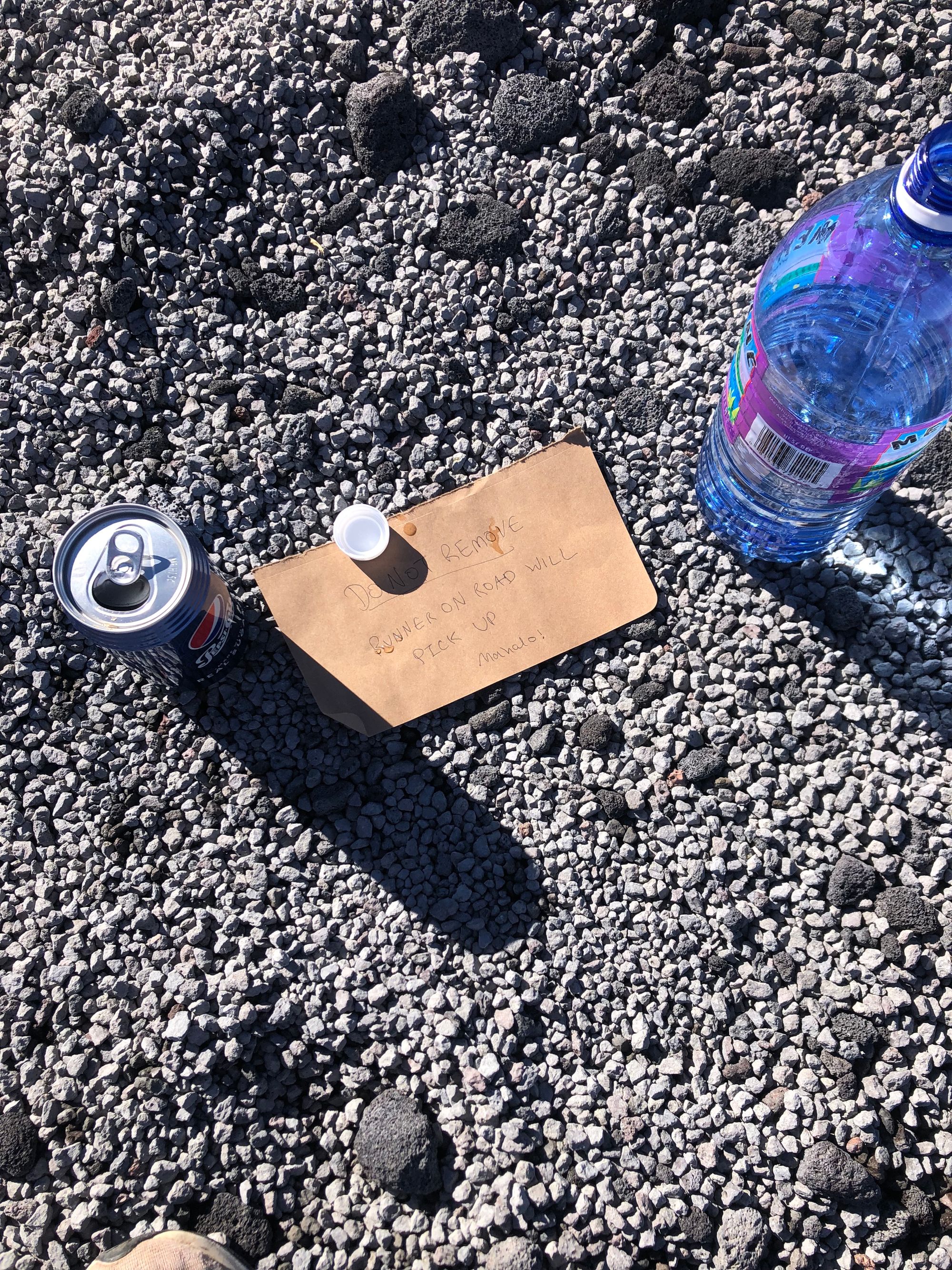Mauna Loa, Long Mountain

Freediving is what originally brought me to the big island.
There's a bay on the west side, south of Kailua Kona where the seafloor drops down hundreds of feet, just a few minutes swim from the shore. For freedivers, this means you can access depth without needing a boat.
I first dove in Honaunau at the end of 2020. With my partner Johnny and freedive instructor, Drew, we set up our buoy and rope and practiced. Within a month, I dove to 100-feet, roughly 30-meters. This is a decent beginner's depth. Sub-elite freedivers dive to 50-meters comfortably and elite freedivers dive well over 50-meters with ease. World record holders, Alenka Artnik and Alexey Molchanov, have dove 122 meters (~400 feet) and 131 meters (~430 feet), respectively.
The point being, I'm not an elite freediver and never will be. I am content with my 30-meter personal record because the reason I want to be competent and safe underwater is so I can soak up as much of the ocean's marine world as possible.
Staring at parrotfish chomping on coral is one of my favorite sites in the whole world. Seeing a manta ray glide underneath me, off to some far away depth, brings me to tears. The ocean is beyond words to me. It's magic. Who wouldn't want to be an observer of magic?
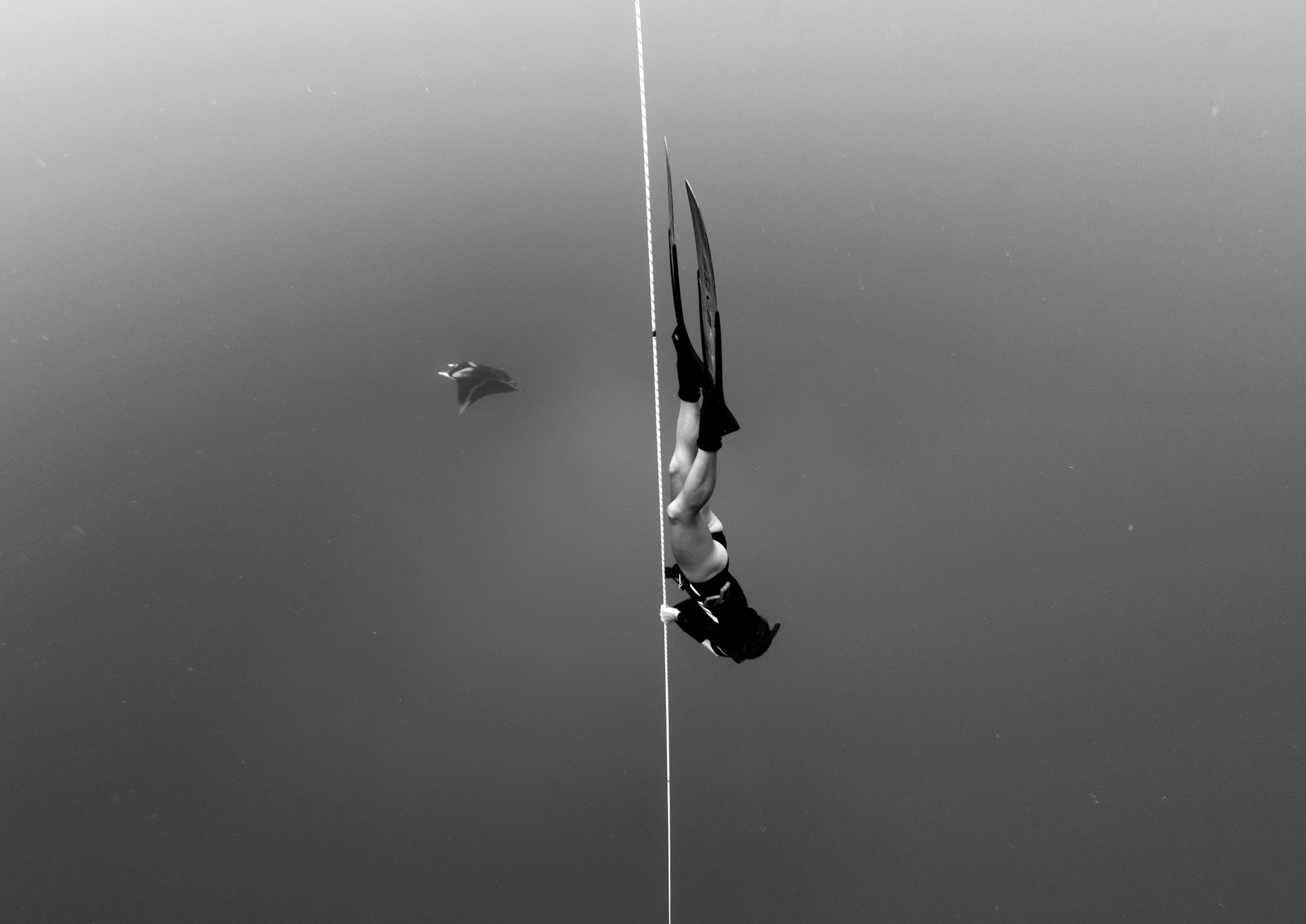
Reefs and climate change
Diving in Hawaii is unlike other places I've dove in the past – most of my past diving has been SCUBA diving for coral research in the equatorial Pacific – because it's higher latitude than equatorial reefs. So the reefs are heartier, the water is slightly cooler, and there isn't as much delicateness in the biodiversity as some reefs like those in Palau or Indonesia.
Still, it's breathtaking to see a school of yellow tang browsing over healthy porites coral. It's also disheartening to see just a few feet away, a giant pile of dead coral, skeletons of what used to be a living keystone animal. Yes, corals are animals.
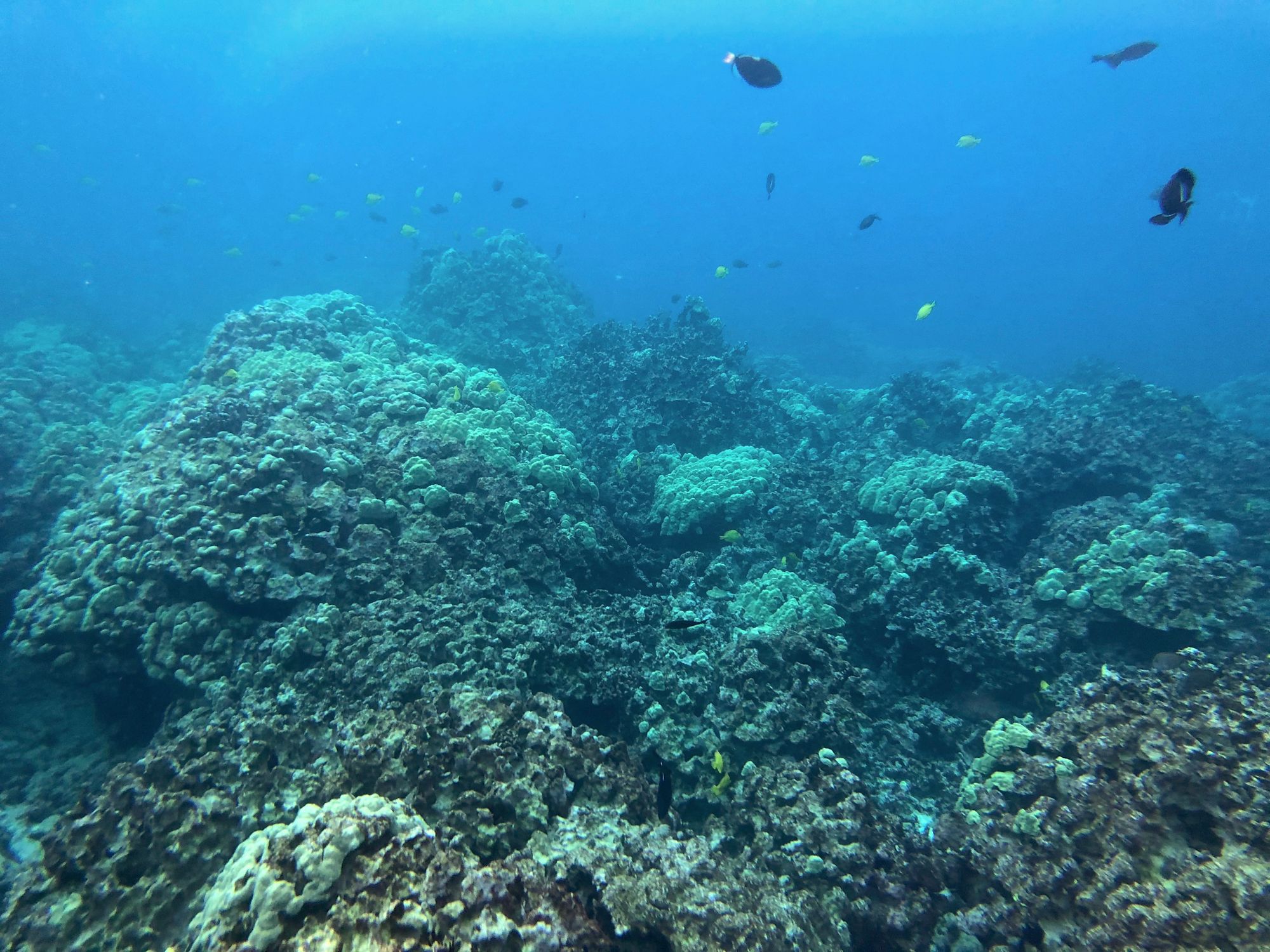
In 2015 in Hawaii, a bleaching event caused coral to expel their symbiotic algae zooxanthellae. This happened because seawater temperature spiked over 1 degree Celsius for 18 weeks in some cases. This eventually caused coral to starve to death, leaving just bleached skeletons where living tissue with zooxanthellae used to cover.
What we see now years later are piles of coral skeletons covered in a different type of algae that doesn't support thriving reef ecosystems. There's some hope that new coral will settle and grow at their rate of roughly one centimeter per year in the debris. But, that's if our oceans can handle more temperature spikes, more acidification and overfishing. They're resilient, corals are! But man, we gotta throw them a bone.
The Keeling Curve
Another part of the big island is its biggest volcano, the world's biggest volcano by volume, Mauna Loa, which translates to long mountain in Hawaiian. When you see it, you question if you really see it because it's so massive it hardly peaks. It's just huge and long and somewhere in there lies a very active volcano. In Hawaiian mythology, Madame Pele is the volcano goddess who resides in the smaller volcano, Kiluea. But her whole realm is all of Hawaii's volcanic activity. So whenever I'm running on the many trails and roads of Hawaii's volcanos, I ask for her blessing for safe passage. What does this have to do with coral and science? Well...
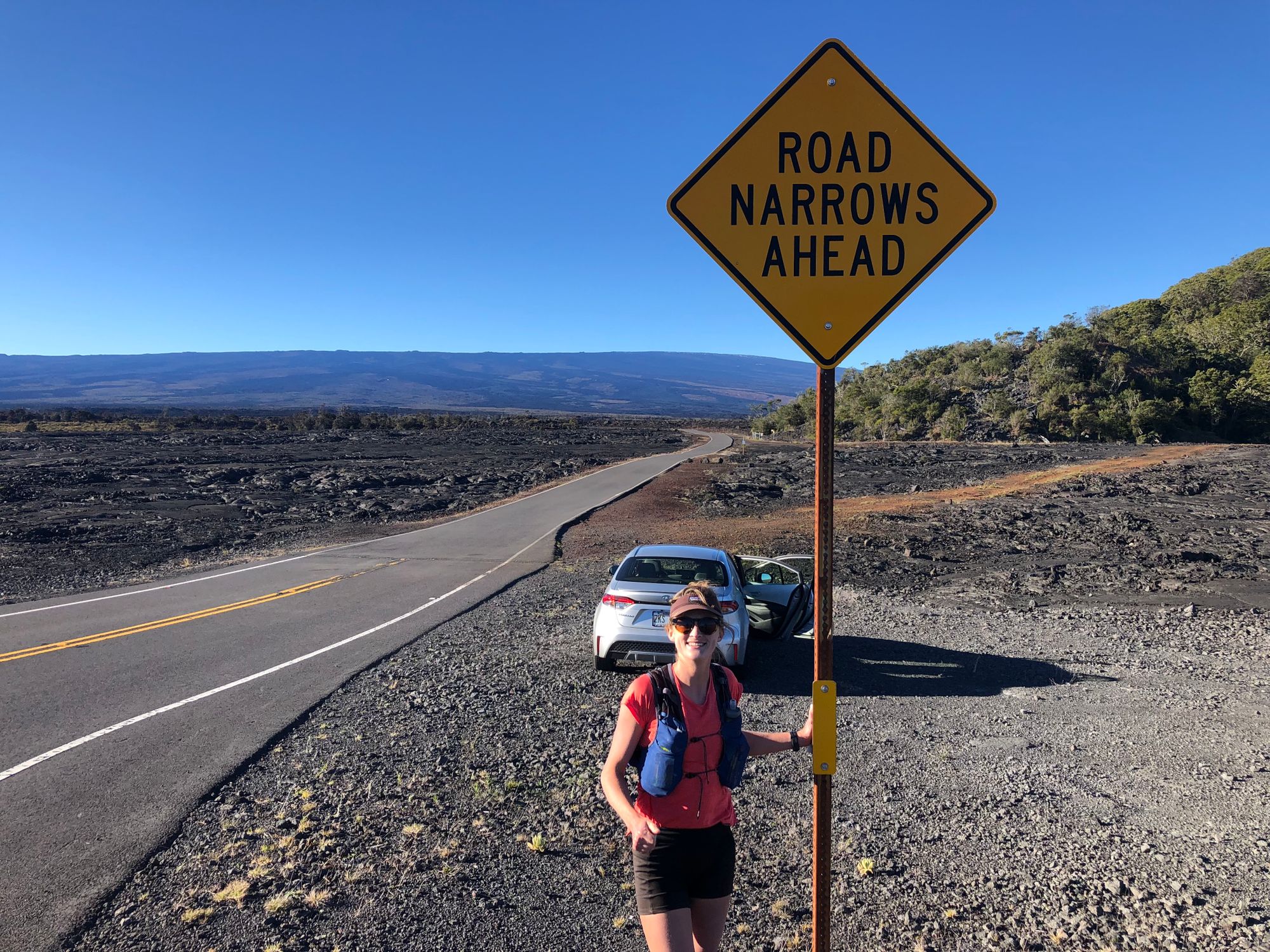
On the north side of Mauna Loa, the side accessible via Saddle Road, there are a handful small buildings, that house some of the most useful scientific instruments in our world. One is an analyzer that records carbon dioxide concentrations in our atmosphere. You know the nonprofit 350.org started by Bill McKibben? That number is a goal CO2 concentration.
Guess what we're at now? A whopping 419.69 parts per million. Why this matters is many scientists credit the Keeling curve with drawing attention to the significant increase of CO2 in the atmosphere in the last half century. It's helped open the world's eyes to anthropogenic climate change.
I should mention that across Saddle Road lies Mauna Kea, which is not in Volcanos National Park and lacks the protection that Mauna Loa has. There's a controversy over a proposed observatory on the summit of the mountain, which is sacred to Hawaiians. Protesters successfully stopped construction in 2019. But debate continues. I personally support the plight of the native Hawaiians and think it's silly to put an observatory on the one sacred summit when there are other places theoretically it could go, like next to the 13 other observatories on Mauna Kea!
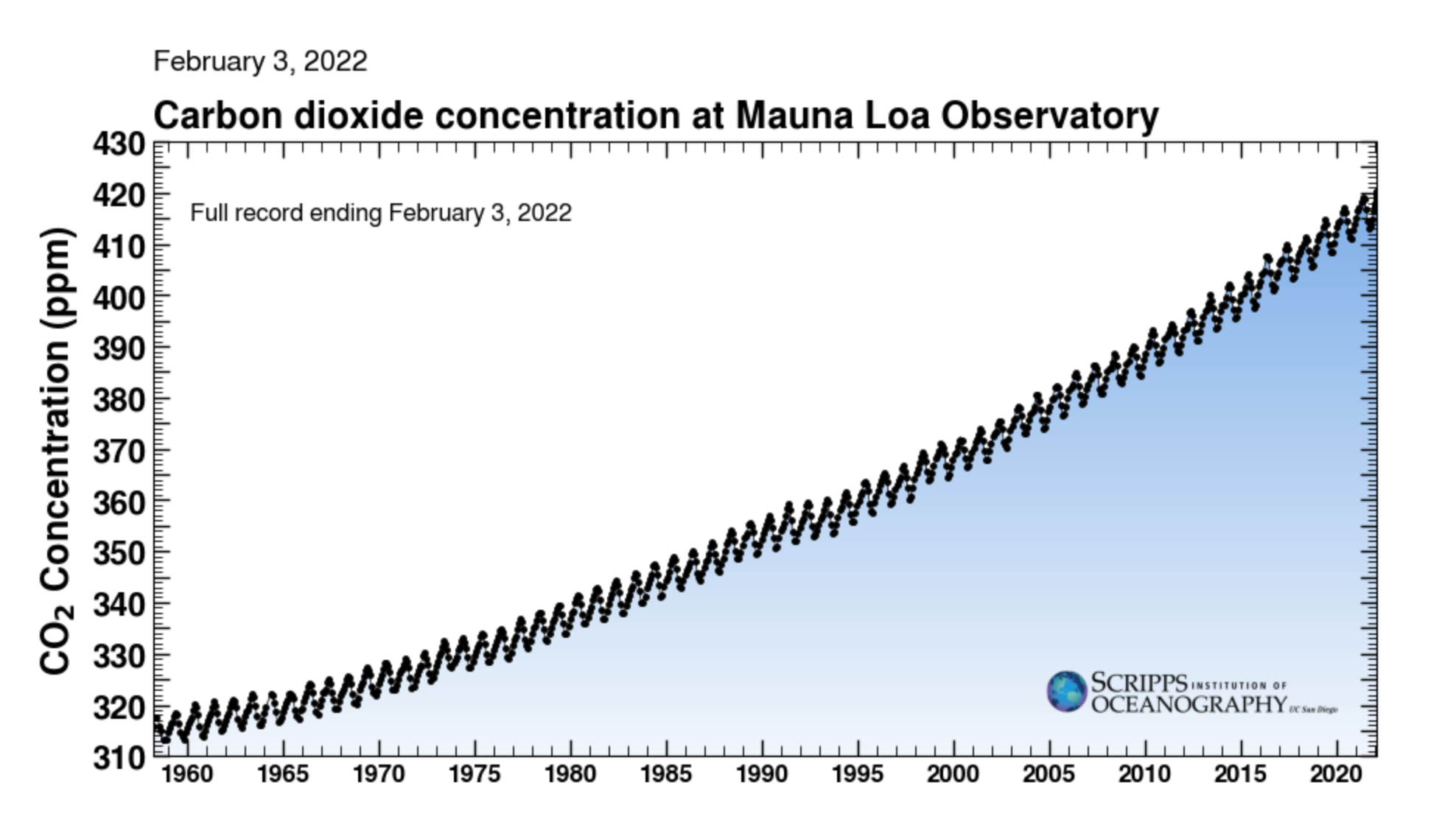
Anyways, I've been dreaming, worrying and wondering how do we protect our world? Particularly how do we protect our oceans? This magical realm that protects us by sucking up most of our atmospheric carbon dioxide. That's why we call oceans our sinks. We're running on borrowed time at this point and everyone seems to know it.
Yet, we continue onwards. Consuming. Voting for people who refuse to take climate science seriously. We let other issues take precedence. We wave a hand at climate issues. That fire wasn't that bad. That bleaching event didn't kill too many reefs. Those hundreds of millions people who already are climate refugees, including people in my own county at home, Boulder County, will figure it out.
This is absolutely bonkers! And we're just trudging forward, hoping our elected leaders figure out some policies soon so that our economies and infrastructures can transition to support renewable energy.
For me, climate anxiety has brought sustained existential dread for the past few years. Recently, I've tried to take a new approach: live fully. Do what I can. Celebrate the good of what we have. Believe in hope.
Running
I believe we still have so much left that's worth worth saving. This is what inspired a run up Mauna Loa. I ran from Saddle Road to the summit and back down to the NOAA observatories. 32-miles (roughly 51-kilometers) with 7,500 feet of gained elevation.
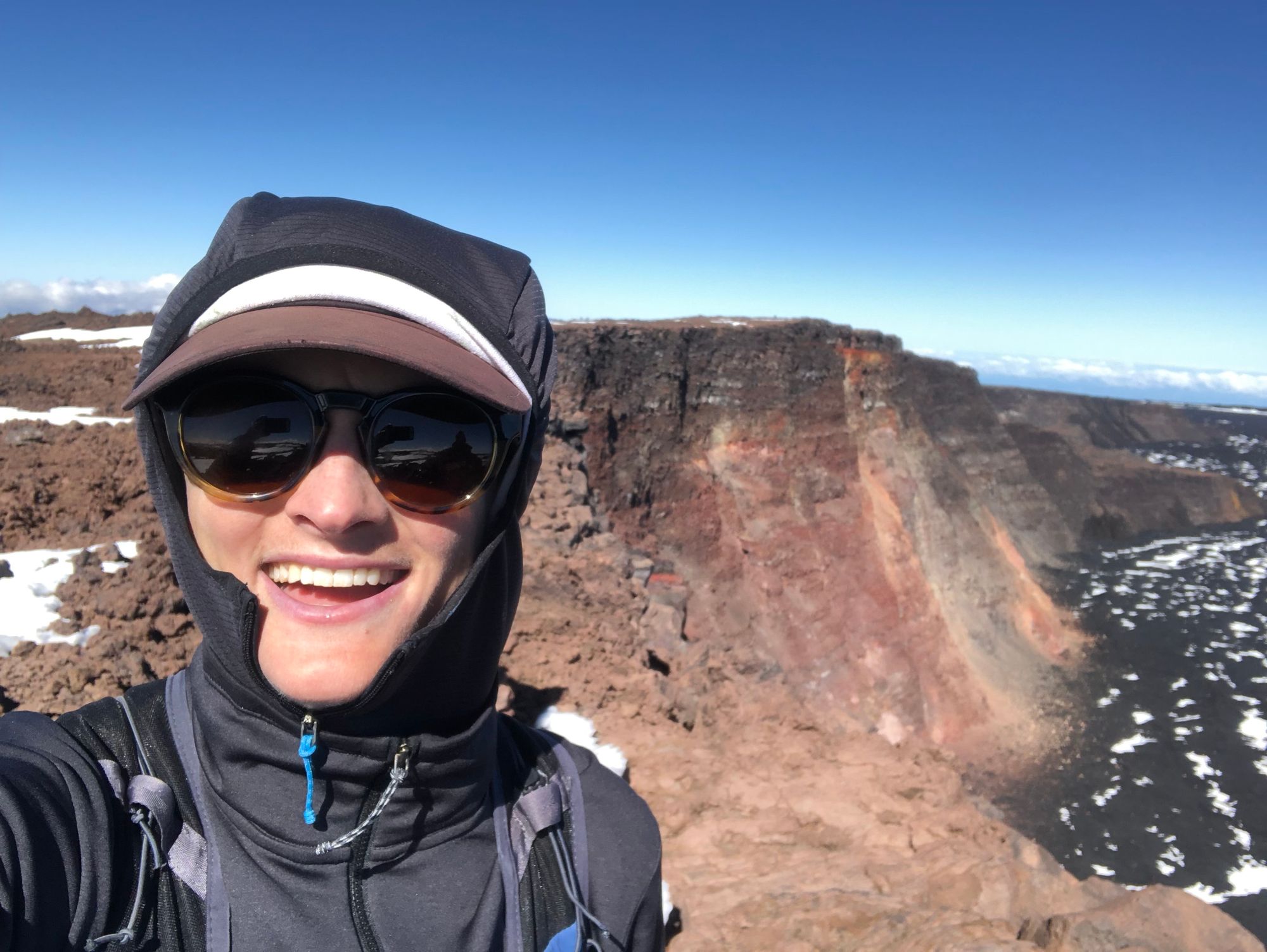
Why?
First and foremost, as an offering to Madame Pele. Because relinquishing my power to a deity just feels right. And respectful to the Hawaiians who've lived on the island for many centuries.
Secondly, I ran in gratitude for the Keeling Curve. This measurement that scientists have been collecting on Mauna Loa in the NOAA observatories since 1958. The measurement that is part of the foundational proof that humans are causing climate change through burning of fossil fuels. Accurate data matters.
Lastly, I ran for the reefs. Just 20 miles west of her summit as the crow flies is Honaunau Bay, where I love to dive. That's where some of the coral are thriving, fish happy and busy as can be, and where some of the coral have died due to climate change.
It's all connected. Honoring sacred deities, respecting and learning from science, and relishing the magic of our natural world.
The run itself was hot and then chilly. Smooth for 18 miles up a road, then extremely slow and tedious on 14 miles of trail woven together with hard-to-find ahu (carins). When I reached the summit at 13,678 foot (4,170 m), I was delirious with earthraging stoke. Staring down into the summit crater was awe-inspiring.
And my Dad hiked the trail, too, while also crewing me, so the whole day was very memorable.
So what?
I don't have the answers, but this run at least was a day I stepped forward in lieu of standing still.
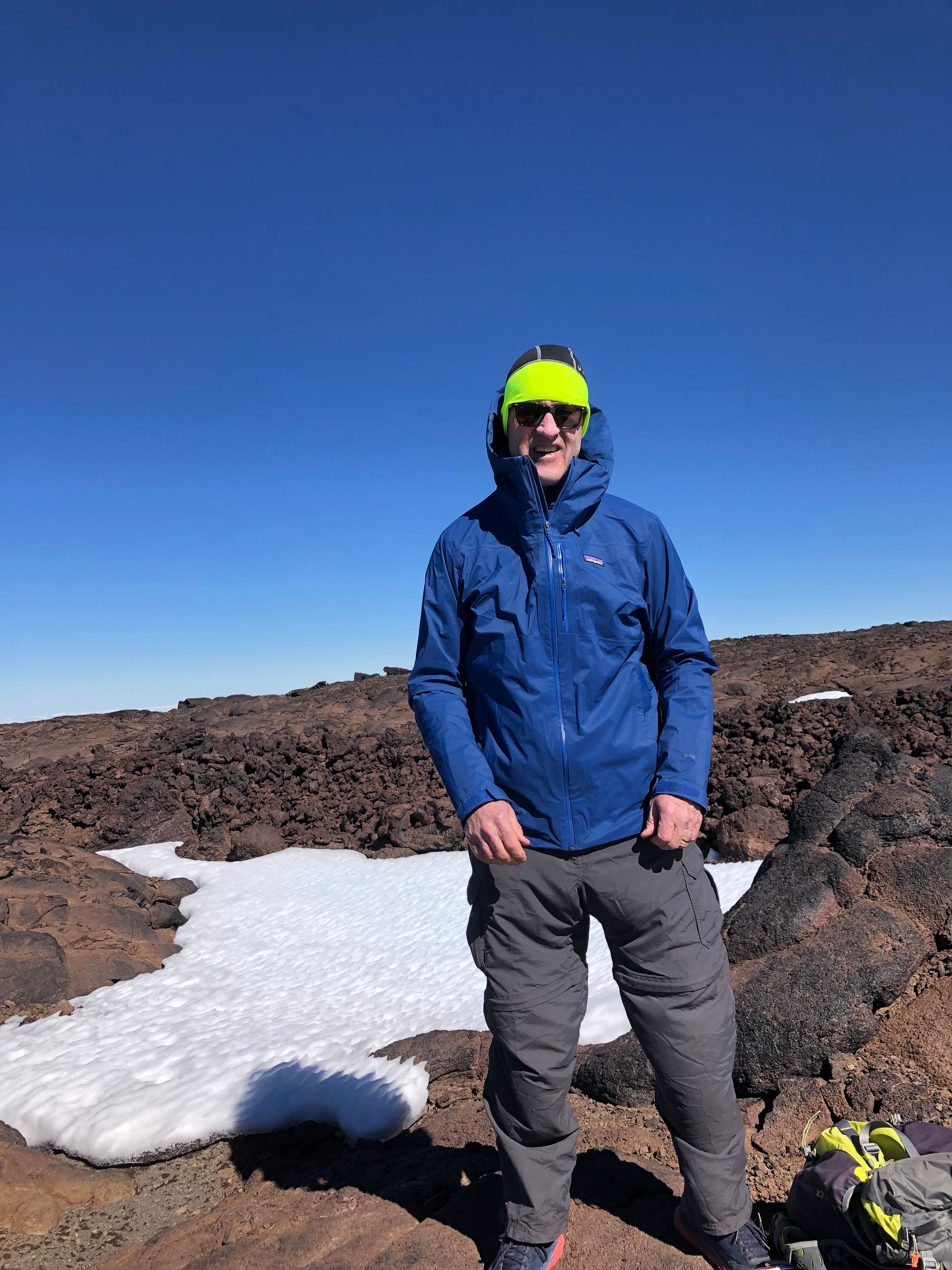
GEAR and PREP
Preparation for a long run like this is important. Mauna Loa is remote and cooled lava is sharp. I studied the trail maps, but should have brought a hard copy of the map. I relied on my phone and guess what? My phone died. Always bring a hard copy of a map if you haven't completely memorized the area. Also, this trail is in Hawaii Volcanos National Park and rangers close it when bad weather rolls in or when Mauna Loa is active (really want to avoid that!). So be sure to check the site and weather before heading up and call the rangers with questions. Don't be an unprepared runner!
For 18 miles of uphill road running: I wore an old pair of Vomeros because I really wanted to retire these shoes and thought this would be a valiant last run for them. After about 600 miles on them, they were toast.
My feet were extremely relieved to get into a fresh pair of La Sportiva Kaptivas for the 14 miles of trail aka hard lava. I applied some nut butter and talc on my feet at the start of the day, which helped prevent any blisters. I also filed my toenails down, like I've learned to do before any long day.
Bottoms: Patagonia endless run shorts. The best running shorts out there. These things have easily 5,000 miles in them and they still work like day one. Deep side pockets. Long enough to not be booty shorts. Over these I threw on the strider pro pants, which are what Luke Nelson calls the "oh shit pants." They're so light, it's silly not to bring them for runs like this when an extra layer on the legs is the difference from comfortable versus goosebump alley.
Shirt: Patagonia Capilene lightweight. The lightest, most technical running shirt. This is what I race in and prefer to wear for any physical activity. Pro tip: soak these in mild soapy water after heavy use to get any lingering stink out. Top layer: Airshed pullover, I was wearing a black one testing it with a fully recycled material lineup and it's still the most versatile running top. For when it got really windy, I put on a waterproof shell over my pack.
Socks: big fan of the Stance run lite socks. Like all of the gear I'm listing here, there're pricey, but my feet are always happy on long days in these and it takes me years to blow through the toes. And can't forget the trusty visor.
Food: I ate a handful of Honey Stinger gels and at least two GF waffles. I also ate a Pb&J when I transitioned at the car before the trail section (and changed into a dry shirt). I'm trying to eat more real food interspersed with gels. Even though some days I have a stomach of steel, others I'm a mess. Last year at Western States I was hitting the loo every other aid station. So, I practiced this PB&J idea to use at Black Canyon 100k. It worked great on Mauna Loa!
I drank Honey Stinger powder and a bunch of Pepsi. My Dad dropped some water and pepsi halfway up the road section.
I use Black Diamond carbon Z poles for the trail section and was happy I had them. For the descent, I forgot my amazing Petzl Swift RL in the car. Pro tip: don't forget your headlamp in your car.
What else? Have any questions? Feel free to reach out. cgalla44@gmail.com
